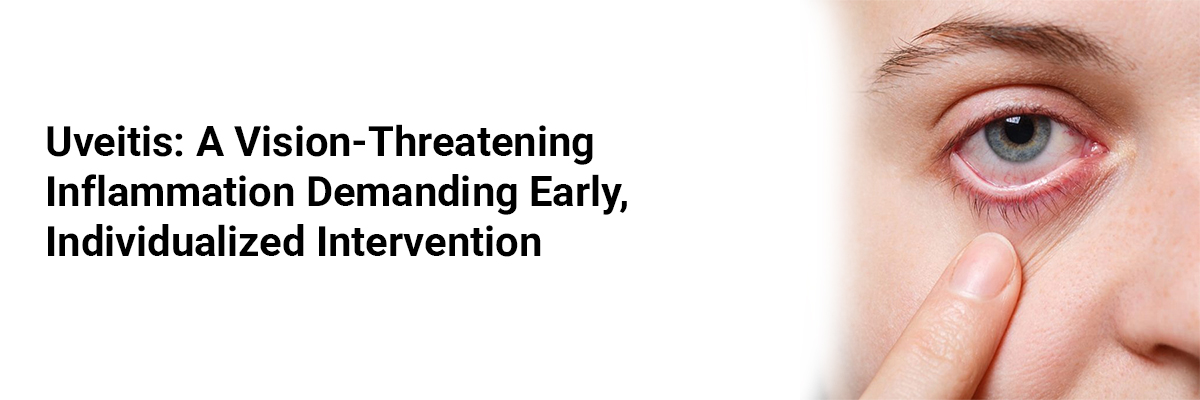
Uveitis: A Vision-Threatening Inflammation Demanding Early, Individualized Intervention
Uveitis, the inflammation of the uveal tract—the iris, ciliary body, and choroid—continues to be a leading yet often underappreciated cause of preventable vision loss in adults, particularly between the ages of 20 and 50 years. A recent review article published in the Journal of the American Medical Association (JAMA) highlights the urgent need for timely diagnosis and personalized treatment strategies to prevent long-term complications, including cataracts, glaucoma, macular edema, retinal detachment, and optic nerve damage.1
The clinical presentation of uveitis can vary widely—ranging from anterior uveitis (41%–60% of cases), affecting the iris and ciliary body, to intermediate (9%–15%), posterior (17%–23%), and panuveitis (7%–32%), which involves all layers of the uvea. The disease may stem from infectious or noninfectious causes. While infections such as toxoplasmosis, herpes viruses, tuberculosis, and HIV account for 11%–21% of cases in high-income countries, this proportion rises significantly, to nearly 50%, in low- and middle-income regions.
Genetic predispositions (e.g., HLA-B27), environmental exposures, and infection rates all contribute to the occurrence of disease. Notably, in the US and Europe, 27%–51% of uveitis cases are idiopathic, and 37%–49% are associated with systemic inflammatory diseases like axial spondyloarthritis.
Treatment depends on the subtype of uveitis and the underlying etiology. For anterior non-infectious uveitis, corticosteroid eye drops remain the mainstay of treatment. In contrast, moderate to severe intermediate, posterior, and panuveitis often require systemic corticosteroids or immunosuppressive therapy. Methotrexate has been shown to control inflammation in approximately 52.1% of cases of posterior uveitis, while mycophenolate mofetil has demonstrated efficacy in 70.9% of patients with this condition. For those not responding to first-line agents, biologic therapies, such as adalimumab, significantly extend the time to treatment failure—from 13 weeks with placebo to 24 weeks—and reduce treatment failure rates from 78.5% to 54.5% (P < .001).
Overall, infectious uveitis necessitates pathogen-specific systemic antimicrobial treatment, with the use of corticosteroids guided by the clinical severity and causative microorganism.
(Source: Acharya NR, Smith JR, Rosenbaum JT. Uveitis. JAMA. 2024;331(20):1969–1970. doi:10.1001/jama.2024.6300. Available from: https://jamanetwork.com/journals/jama/article-abstract/2834628 )













Please login to comment on this article